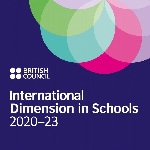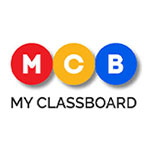Art education is a vital component of a well-rounded curriculum in schools. It encompasses various forms of creative expression, such as painting, sculpture, music, dance, and theater. Unfortunately, in recent years, the emphasis on standardized testing and core subjects has led to a decline in art education programs. However, integrating art into the classroom can have numerous benefits for students. In this blog post, we will explore the importance of art education in schools and discuss the advantages of integrating art into various subjects.
Art education might mean a lot of things depending on people, but the bottom line is that it provides information and instruction in diverse sectors of the arts such as music, theater, dance, and visual arts. Society currently works in such a manner that machines can undertake the majority of the manual and technical occupations that people used to do. The key requirement is for innovation and originality, as well as the ability to think outside the box and have strong interpersonal skills. Art, just like mathematics and science, demands consistent practice and cannot be accomplished via random study. Regular arts involvement and instruction must be incorporated into the school curriculum for it to have an impact on kids.
Despite the abundance of evidence demonstrating the importance of arts integration in developing well-prepared learners and leaders, many institutions regard arts education as a luxury and exclude it entirely from their educational programme with the goal to concentrate on or finish the syllabus. However, there is a distinct tendency in many other institutions towards comprehensive student development, including art as an integral element of the curriculum. Arts education encourages pupils to think beyond the box and explore themes in novel ways.
Let’s discuss a few points that explain the importance of Art Education in schools.
Enhancing Creativity and Imagination:
Art education nurtures creativity and imagination in students. Through artistic activities, students are encouraged to think outside the box, explore new ideas, and express themselves in unique ways. These skills are not only crucial for artistic endeavors but also translate into other areas of life. By integrating art into the classroom, teachers can provide opportunities for students to engage in creative problem-solving, innovative thinking, and imaginative exploration.
Strengthening Collaboration and Communication Skills:
Art education often involves collaborative projects that require students to work together towards a common goal. By integrating art into the classroom, teachers can promote teamwork, cooperation, and effective communication skills. Group activities such as creating murals, composing music, or staging a play allow students to develop interpersonal skills, learn to listen to others' ideas, and express their own thoughts clearly. These collaborative experiences prepare students for future endeavors where teamwork and effective communication are essential.
Boosting Emotional and Psychological Well-being:
Engaging in art can have a positive impact on students' emotional and psychological well-being. Art provides an outlet for self-expression and allows students to explore their emotions and experiences in a safe and supportive environment. Integrating art into the classroom can help students cope with stress, develop self-confidence, and improve their overall mental health. Art education classes can serve as a therapeutic space where students can express themselves, process their thoughts and emotions, and develop a sense of personal identity.
Fostering Cultural Awareness and Diversity:
Art has the power to transcend cultural barriers and communicate universal themes. By incorporating art from diverse cultures and historical periods into the curriculum, schools can foster cultural awareness and appreciation. Art education classes provide opportunities for students to explore the traditions, values, and perspectives of different societies. This exposure helps create a more inclusive and empathetic learning environment, fostering respect for diversity and encouraging students to embrace different artistic expressions.
Teamwork:
The utilization of the performing and visual arts is a novel technique to teaching collaboration and communication skills. The larger the creative team, the more useful the art project is for people who are open-minded and eager to learn, develop, integrate, and thrive. As young artists strive towards a shared objective, collaboration fosters a sense of camaraderie and connection to the community. Researchers discovered that pupils who worked on an art project jointly and engaged in a debate were more thoughtful than those who worked alone.
In summary:
Art education is an integral part of a comprehensive curriculum that fosters creativity, critical thinking, cultural awareness, collaboration, and emotional well-being. By integrating art into the classroom, schools can provide students with a well-rounded education that prepares them for success in various aspects of life. As educators and policymakers, it is crucial to recognize the significance of art education and ensure its inclusion in schools to nurture the artistic talents and holistic development of our students.
Vikas The Concept School is a world-class facility committed to grooming young people for future leadership roles. In a methodical approach, we provide concepts and high-quality instruction. Vikas talks in the voice of the future at school. We've created a learning environment in which children look forward to coming every day. Visit our website to discover more about our curriculum, academics, and extracurricular activities. Please contact us right away for a prompt admissions enquiry.















